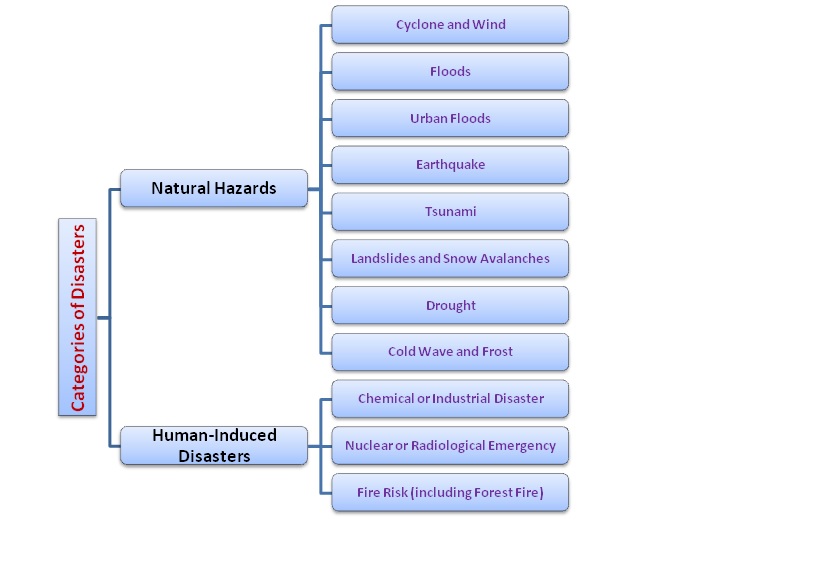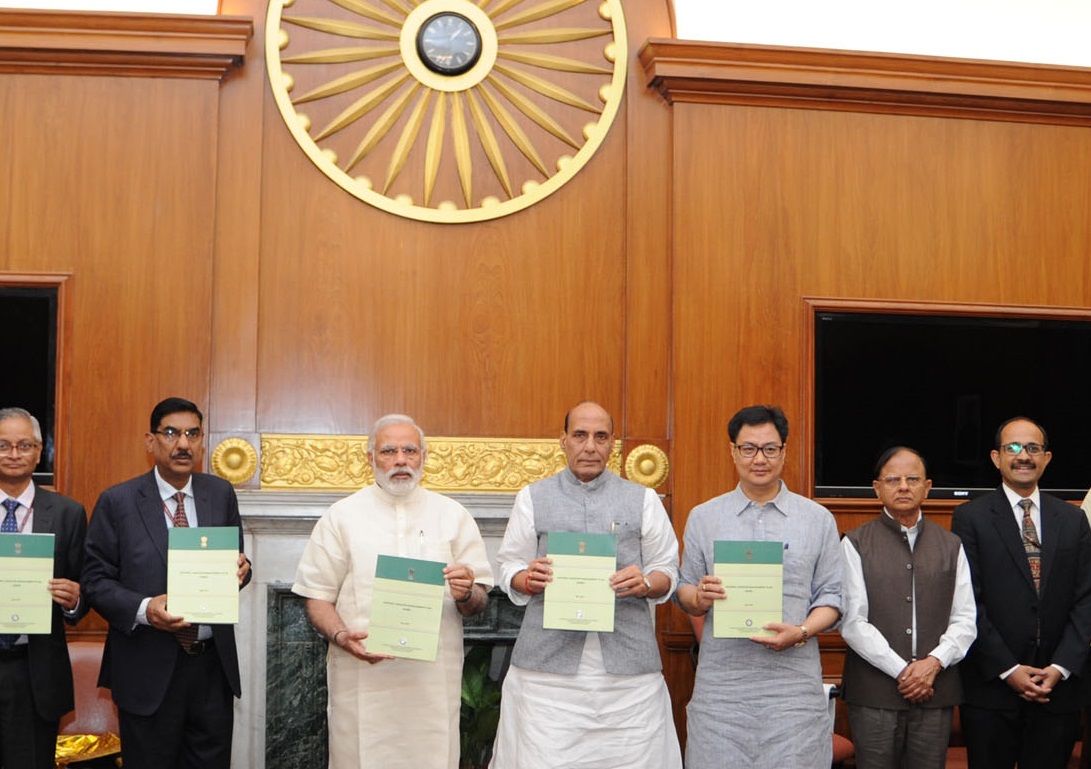By Anasua Das Mukherjee
- On 1st June 2016, Prime Minister Shri Narendra Modi released India’s first ever National Disaster Management Plan (NDMP), 20161. The National Plan is produced by the National Disaster Management Authority (NDMA), which is an apex body for coordination and governance of nation-wide disaster management activities in India. NDMP aims to make India disaster resilient and reduce the loss of lives both from the natural hazards and human-induced disasters. The Plan covers all phases of disaster management, namely, prevention, mitigation, response, and recovery. In the Plan document, PM Modi describes the significance of the Plan:
“The aim of the plan is to make India disaster resilient. It will help to maximize the ability of the country to cope with disasters at all levels by integrating disaster risk reduction into development and by increasing the preparedness to response to all kinds of disasters. The Plan takes into account the global trends in disaster management. It incorporates the approach enunciated in the Sendai Framework for Disaster Risk Reduction 2015-2030, which is an agreement under the auspices of the United Nations to which India is a signatory”.
This national plan is prepared in continuation of the National Policy on Disaster Management, 2009. But, NDMP draws the guiding principles from the post-2015 development agenda, i.e., 2030 Development Agenda of the United Nations. The guiding principles of NDMP are explicitly elaborated in its Vision statement, which states: “Make India disaster resilient, achieve substantial disaster risk reduction, and significantly decrease the losses of life, livelihoods, and assets – economic, physical, social, cultural, and environmental – by maximizing the ability to cope with disasters at all levels of administration as well as among communities”2.
The scope of NDMP encompasses all kinds of disasters arising out either from the natural hazards or from the human-induced disasters. The Plan document recognizes eight categories of Natural Hazards, namely, (i) Cyclone and Wind (including Tropical Cyclones and Storm Surge), (ii) Floods, (iii) Urban Floods, (iv) Earthquake, (v) Tsunami, (vi) Landslides and Snow Avalanches, (vii) Drought, and (viii) Cold Wave and Frost. Whereas, The same indicates three types of Human-Induced Disasters, namely, (i) Chemical or Industrial Disaster, (ii) Nuclear or Radiological Emergency, and (iii) Fire Risk (including Forest Fire). In a Table in NDMP document, fifteen categories of disasters are listed and the nodal ministries for management or mitigation of different disasters identified.
The Plan document indicates three-tier hierarchy in administering disaster management, namely from the top: (i) national disaster management authority, (ii) state disaster management authority, and (iii) district disaster management authority. NDMA is the apex body responsible for laying down the policies, plans, and guidelines for disaster management for ensuring timely and effective response to disaster across the country. In addition to the institutions of authority, the country also maintains a National Disaster Response Force (NDRF) and State Disaster Response Force (SDRF) in every state and union territory. NDRF and SDRFs are responsible for rapid actions and recovery at the disaster sites, anywhere in the country. The responsibilities of capacity building, training, and research are performed by the National Institute of Disaster Management (NIDM).
There also exists an advisory institution in South Asia, namely, SAARC Disaster Management Centre, where the Indian government is an active member for disaster risks reduction (DRR) and disaster management in the South Asian region. Several United Nations specialized agencies are also working in South Asia for achieving the targets as laid out in the Sendai Framework for DRR, based on post-2015 development agenda3. NDMP further points out India’s commitments as reflected in the UN-led COP21 Climate Change agreement to combat human-induced climate change: “the Paris Agreement on global climate change points to the importance of averting, minimizing, and addressing loss and damage associated with the adverse effects of climate change, including extreme weather events and slow onset events, and the role of sustainable development in reducing the risk of loss and damage”2. NDMP incorporates four priorities for action under the Sendai Framework into the national plan, namely, (i) understanding disaster risk; (ii) strengthening disaster risk governance to manage disaster risk, (iii) investing in disaster risk reduction for resilience, and (iv) enhancing disaster preparedness for effective response and to “Build Back Better” in recovery, rehabilitation and reconstruction. Thus, NDMP makes a comprehensive strategic plan suggesting the specific national strategy in action points such as reducing risk, enhancing resilience, preparedness and response, strengthening disaster risk governance, recovery and building back better, and capacity development.
While proposing a robust DRR governance framework for the country, NDMP contributes to better coordination in mitigating climatic challenges, natural hazards, and human-induced disasters. Whilst the Indian subcontinent is experiencing an increased frequency of disasters and hazards due to climatic change and global warning, NDMP now brings a timely and strong governance structure for the benefits of citizens of the country.
 Figure 1: Categories of Disasters as suggested in NDMP 2016
Figure 1: Categories of Disasters as suggested in NDMP 2016References:
- Press Information Bureau (2016). PM releases National Disaster Management Plan. Available at http://pib.nic.in/newsite/PrintRelease.aspx?relid=145840.
- National Disaster Management Authority, India (2016). National Disaster Management Plan (NDMP), 2016. Available at http://bit.ly/29hRgRi.
- United Nations(2016). Sendai Framework for Disaster Risk Reduction 2015-2030. Geneva: United Nations Office for Disaster Risk Reduction.
(The author is an Independent Researcher and Policy Analyst based in New Delhi)
(The views expressed are the author's own and do not necessarily reflect the position of the organisation)

